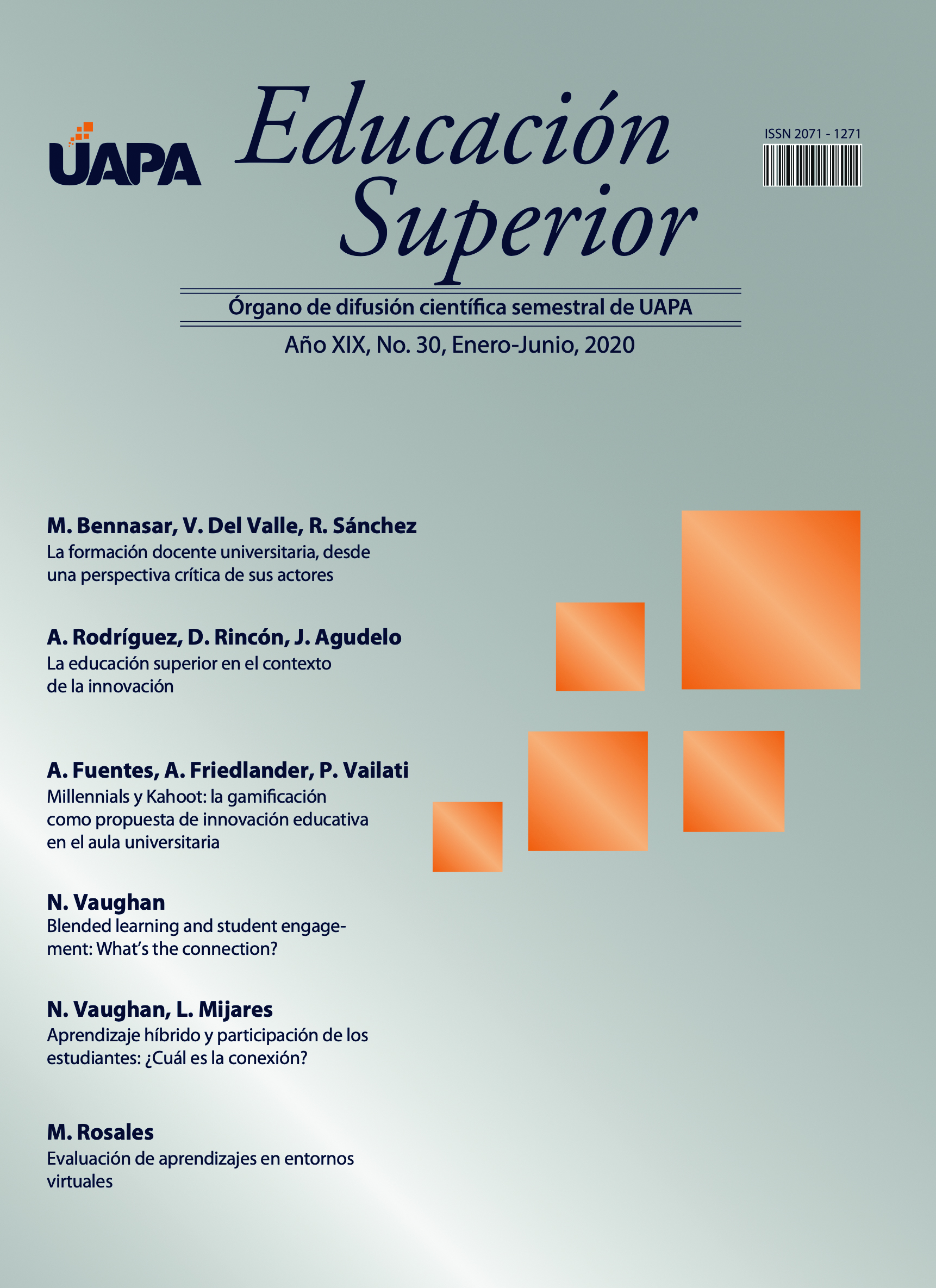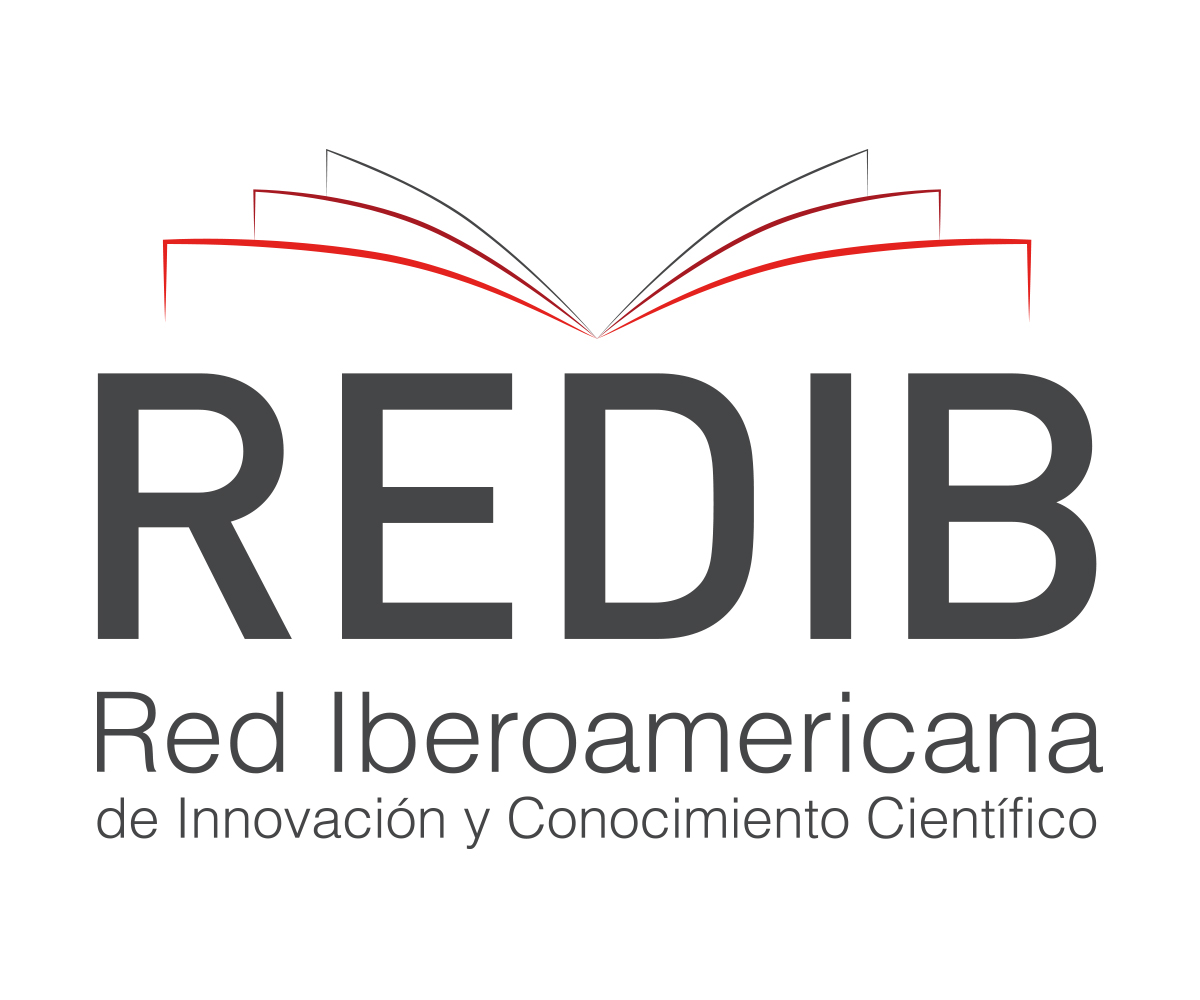Millennials y Kahoot!: la gamificación como propuesta de innovación educativa
Millennials and Kahoot!: gamification as a proposal for educational innovation
DOI:
https://doi.org/10.56918/es.2020.i30.pp61-78Palabras clave:
Gamificación, Tecnología educativa, KahootResumen
Se realizó en la Universidad Argentina de la Empresa una investigación que tuvo como objetivo introducir la gamificación educativa a través de la implantación de Kahoot! como recurso de enseñanza-aprendizaje. Esta experiencia fue llevada a cabo con alumnos universitarios de primer año, típicamente pertenecientes a la generación Millennials. El diseño de la investigación utilizada fue no experimental y de tipo descriptivo. La muestra estuvo formada por estudiantes de Marketing (curso 1282 y 3040), que voluntariamente aceptaron participar en la investigación. Se utilizó como instrumento la encuesta y los resultados fueron procesados mediante el uso del programa SPSS 20. Entre las conclusiones más relevantes, se ha podido observar que la utilización de Kahoot! aumentó notablemente la motivación de los estudiantes, les permitió clarificar cuáles son los objetivos y los conceptos más relevantes de la asignatura y esperan poder utilizarlo en las demás materias que están cursando.Citas
Alba Ferre, E., Moreno Blesa, L., & Ruiz González, M. (2015). The Star System apps to bridge educational gaps: Kahoot, Screencast y tableta gráfica.
Atkinson, M.L. (2004). Advice for the young at heart: Understanding the Millennial Generation. Guidance & Counseling, 19(4), 153-157.
Benítez, G. S. (2010). Las estrategias de aprendizaje a través del componente lúdico. MarcoELE: Revista de didáctica, 11, 20.
Cerro, G. M. (2015). Aprender jugando, resolviendo: diseñando experiencias positivas de aprendizaje. ABACUS llevado a cabo en el Congreso Educar para transformar: Aprendizaje experiencial, XII Jornadas Internacionales de In http://abacus.universidadeuropea.es/handle/11268/4334 - Consultado en fecha (07- 08-18).
Coomes, M. D. & DeBard, R. (Eds.) (2004). Serving the Millennial Generation. New Directions in Student Services. San Francisco: Jossey Bass.
Corral, E. M. (2010). El uso de los videojuegos como recurso de aprendizaje en educación primaria y Teoría de la Comunicación. Diálogos de la comunicación, (80), 7.
Csikszentmihalyi, M. (1990). Flow. The Psychology of Optimal Experience. New York (HarperPerennial) 1990.
Da Silva, J. B., Andrade, M. H., de Oliveira, R. R., Sales, G. L., & Alves, F. R. V. (2018). Tecnologias digitais e metodologias ativas na escola: o contributo do Kahoot para gamificar a sala de aula. Revista Thema, 15(2), 780-791.
Deci, E. L., & Ryan, R. M. (1985). The general causality orientations scale: Self-determination in personality. Journal of research in personality, 19(2), 109-134.
García, C. M. A. (2008). Estilos de aprendizaje. Presente y futuro. Journal of Learning Styles, 1(1).
Howe, N. & Strauss, W. (2000). Millennials rising: The next great generation. New York: Vintage Books.
Iwamoto, D. H., Hargis, J., Taitano, E. J., & Vuong, K. (2017). Analyzing the efficacy of the testing effect using Kahoot TM on student Performance. Turkish Online Journal of Distance Education (TOJDE), 18(2).
Kapp, K.M. (2012). The Gamification of learning and instruction. San Francisco, Estados Unidos: Ed Pfeiffer.
Laski, E. V., & Siegler, R. S. (2014). Learning from number board games: you learn what you encode. Developmental Psychology, 50(3), 853.
Maggio, M. (2012). Enriquecer la enseñanza. Los ambientes con alta disposición tecnológica como oportunidad. Buenos Aires: Editorial Paidós.
McGlynn, A. P. (2005). Teaching millennials, our newest cultural cohort. Education Digest, 71(4), 12.
Méndez, D. (2012). The experience of learning physics through the application of ICT. Energy education science and technology Part B. Social and educational studies, nº 4(1), p. 674-679.
Pink, D.H. (2011). Drive: The Surprising Truth About What Motivates Us. La sorprendente verdad sobre lo que nos motiva. España, Grupo Planeta, 2011.
Plass, J. L., O’Keefe, P. A., Homer, B. D., Case, J., Hayward, E. O., Stein, M., & Perlin, K. (2013). The impact of individual, competitive, and collaborative mathematics game play on learning, performance, and motivation. Journal of Educational Psychology, 105(4), 1050.
Salinas, J. (2004). Innovación docente y uso de las TIC en la enseñanza universitaria. International Journal of Educational Technology in Higher Education (ETHE), 1(1).
Sanabria, A., & Hernández, C. M. (2011). Percepción de los estudiantes y profesores sobre el uso de las TIC en los procesos de cambio e innovación en la enseñanza superior. Aloma: revista de psicologia, ciències de l'educació i de l'esport Blanquerna, (29), 273-290.
Sousa, S., Ropero, E. y López, M.P. (2014). Metodología del puzzle aplicada a flipped classroom. ABACUS llevado a cabo en el Congreso Educar para transformar, XI Jornadas Internacionales de Innovación Universitaria, 173-179. Recuperado de: http://abacus.universidadeuropea.es/handle/11268/3583 - Consultada en fecha (23- 07-18).
Vázquez, G. (1993). Inteligencia, tecnología y escuela en la edad post-industrial. Revista de Educación, Madrid.
Wang, A. I., & Lieberoth, A. (2016). The effect of points and audio on concentration, engagement, enjoyment, learning, motivation, and classroom dynamics using Kahoot!. In European Conference on Games Based Learning (p. 738). Academic Conferences International Limited.
Wang, A. I., Øfsdahl, T., & Mørch-Storstein, O. K. (2007, November). Lecture quiz-a mobile game concept for lectures. In Proceedings of the 11th IASTED International Conference on Software Engineering and Application (SEA’07) (pp. 305-310).
Wang, A. I., Zhu, M., & Sætre, R. (2016). The Effect of Digitizing and Gamifying Quizzing in Classrooms. In European Conference on Games Based Learning (p. 729). Academic Conferences International Limited.
Woo, J. C. (2014). Digital Game-Based Learning Supports Student Motivation, Cognitive Success, and Performance Outcomes. Journal of Educational Technology & Society, 17(3).
Wu, B., Wang, A. I., Børresen, E. A., & Tidemann, K. A. (2011). Improvement of A lecture game concept-Implementing lecture quiz 2.0. In 3rd International Conference on Computer Supported Education (pp. 26-35).
Descargas
Publicado
Cómo citar
Número
Sección
Licencia
Derechos de autor 2020 Educación Superior

Esta obra está bajo una licencia internacional Creative Commons Atribución-CompartirIgual 4.0.

Se distribuye bajo una Licencia Creative Commons Atribución-NoComercial-CompartirIgual 4.0 Internacional.
Se recomienda a los autores que compartan sus artículos en diversas plataformas y tienen derecho de autor sin restricciones. Aquellos autores/as que tengan publicaciones con esta revista, aceptan los términos siguientes:
a) Los autores/as conservarán sus derechos de autor y garantizarán a la revista el derecho de primera publicación de su obra, el cuál estará simultáneamente sujeto a la Licencia de reconocimiento de Creative Commons que permite a terceros compartir la obra siempre que se indique su autor y su primera publicación esta revista.
b) Los autores/as podrán adoptar otros acuerdos de licencia no exclusiva de distribución de la versión de la obra publicada (p. ej.: depositarla en un archivo telemático institucional o publicarla en un volumen monográfico) siempre que se indique la publicación inicial en esta revista.
c) Se permite y recomienda a los autores/as difundir su obra a través de Internet (p. ej.: en archivos telemáticos institucionales,en su página web, repositorios institucionales, redes académicas) antes y durante el proceso de envío, lo cual puede producir intercambios interesantes y aumentar las citas de la obra publicada.







